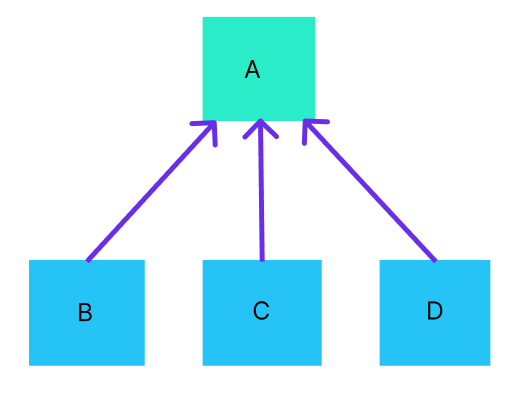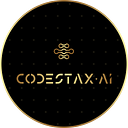Web Mining

Introduction:
Web mining is the process of applying data mining techniques and algorithms to automatically discover and extract information from Web documents and services.
Web mining is a subset of data mining.
The contents of data mined from the Web may be a collection of facts that Web pages are meant to contain. These may consist of text, structured data such as lists and tables, and even images, video and audio.
The web has several aspects that yield multiple approaches for the mining process, such as web pages including text. Web pages are connected via hyperlinks, and user activity can be monitored via web server logs.
Types of Web Mining
- Web Content Mining
- Web Structure Mining
- Web Usage Mining

Web content mining
- Web content mining is the process of collecting useful data from websites
- Basically, it is the browsing and mining of text, images and graphs of web pages based on a search query
- Content includes news, comments, company information, product catalogues, etc.
Web structure mining
- Web structure mining is the application of discovering structure information from the web.
- The structure of the web graph consists of web pages as nodes, and hyperlinks as edges connecting related pages.
- This connection enables us to extract data associated with the search query, directly pointing us to the connecting webpage from the website.
- Organization of content from the web page in tree-structure format based on HTML and XML tags with in the page.
Web usage mining
- Web usage mining is the process of applying data techniques to derive useful data and information from the weblog.
- It is used to meet needs of the user such as identifying the web pages that the user has accessed
- This mining is used to observe the user behavior at the time of interacting with the web.
- A Web Server actually registers the web log entry, for each access of web page. It contains the URL requested, IP address from the request side and timestamp.
Why web mining?
Currently we’re living in the era of the internet. We are looking for content on search engines such as Google, Yahoo, and others. The search engine gives out a list of websites based on the query search.
So, we have to know exactly how the search engine works.
In the early 90s, the first search engines used text-based ranking systems to decide which pages to return based on a given query.
Actually, the search engine browses through its index and counts the occurrences of the key words in each web file. The winners of the webpages are the pages with the highest number of occurrences of the key words. These websites display them back to the user.
But the text-based ranking system was not ideal because there will be millions of webpages with that particular word. So the user does not scan all the webpages that contain a given word.
Some users anticipate only the top 5–20 webpages related to their relevant query search.
Modern search engines provide the best related results compared to text-based ranking systems. It uses one of the most influential algorithms for computing the relevance of web pages, the PageRank algorithm, used by the Google search engine.
Searching Engine Types
Title-based Search Engine
- Searches only with “titles”
- Sorts the results
Full-Text Search Engine
- E.g. Google
- Examines all the words in every stored document and also uses PageRank
PageRank

PageRank is Google’s system of counting the links and the algorithmic method that google uses to rank pages and it assign a numeric value to the page.
With the help of that numeric value, it determines how important the webpage is.
How is PageRank calculated?

To calculate PageRank, all of the links from the web pages are taken into account.
There are three types of links
- Inbound Link
- Outbound Link
- Dangling Link
Page rank formula
PR(A) = (1-d) + d(PR(t1)/C(t1) + … + PR(tn)/C(tn))This equation shows how important the webpage actually is.
Here,
t1,t2,…,tn are the web pages are linking to the webpage A.
C is the no of outbound links that a page has.
‘d’ is the damping factor (i.e., d= 0.85)
Now we’ll look into some examples of how PageRank works.
Example 1:
Let us assume four web pages A, B, C, and D
Let each page have a PageRank of 0.25

The Page Rank of web page A has PR(A) = PR(B) + PR(C) + PR(D)
Example 2:

The Page Rank of web page A has
PR(A) = PR(B)/L(B) + PR(C)/L(C) + PR(D)/L(D)L(B), L(C), L(D) is the number of outbound links of page B, C, D.
PR(A) = PR(B)/2 + PR(C)/1 + PR(D)/3The parameter d is the damping factor which can be set between 0 and 1 (d is set to 0.85)
The Page rank of Web Page A has:
PR(A) = 1-d/N + d(PR(B)/L(B) + PR(C)/L(C) + PR(D)/L(D))Implementation of page rank algorithm
networkx is a package available in Python to create graph structures, calculate page rank, total nodes and total edges in a page.
Conclusion
It is not the only algorithm used by search engines, as Google also utilizes other algorithms and methods to rank their pages these days. But it was instrumental in launching Google to the forefront and demonstrates the power of web mining.
About the Author
Gowshik is a SDE intern in CodeStax.Ai. He is full stack developer, interested to work in challenging areas and create new ideas while coding. He mainly interested in competitive programming. He always says “Explore new things in life”.
About CodeStax.Ai
At CodeStax.Ai, we stand at the nexus of innovation and enterprise solutions, offering technology partnerships that empower businesses to drive efficiency, innovation, and growth, harnessing the transformative power of no-code platforms and advanced AI integrations.
But the real magic? It’s our tech tribe behind the scenes. If you’ve got a knack for innovation and a passion for redefining the norm, we’ve got the perfect tech playground for you. CodeStax.Ai offers more than a job — it’s a journey into the very heart of what’s next. Join us, and be part of the revolution that’s redefining the enterprise tech landscape.
